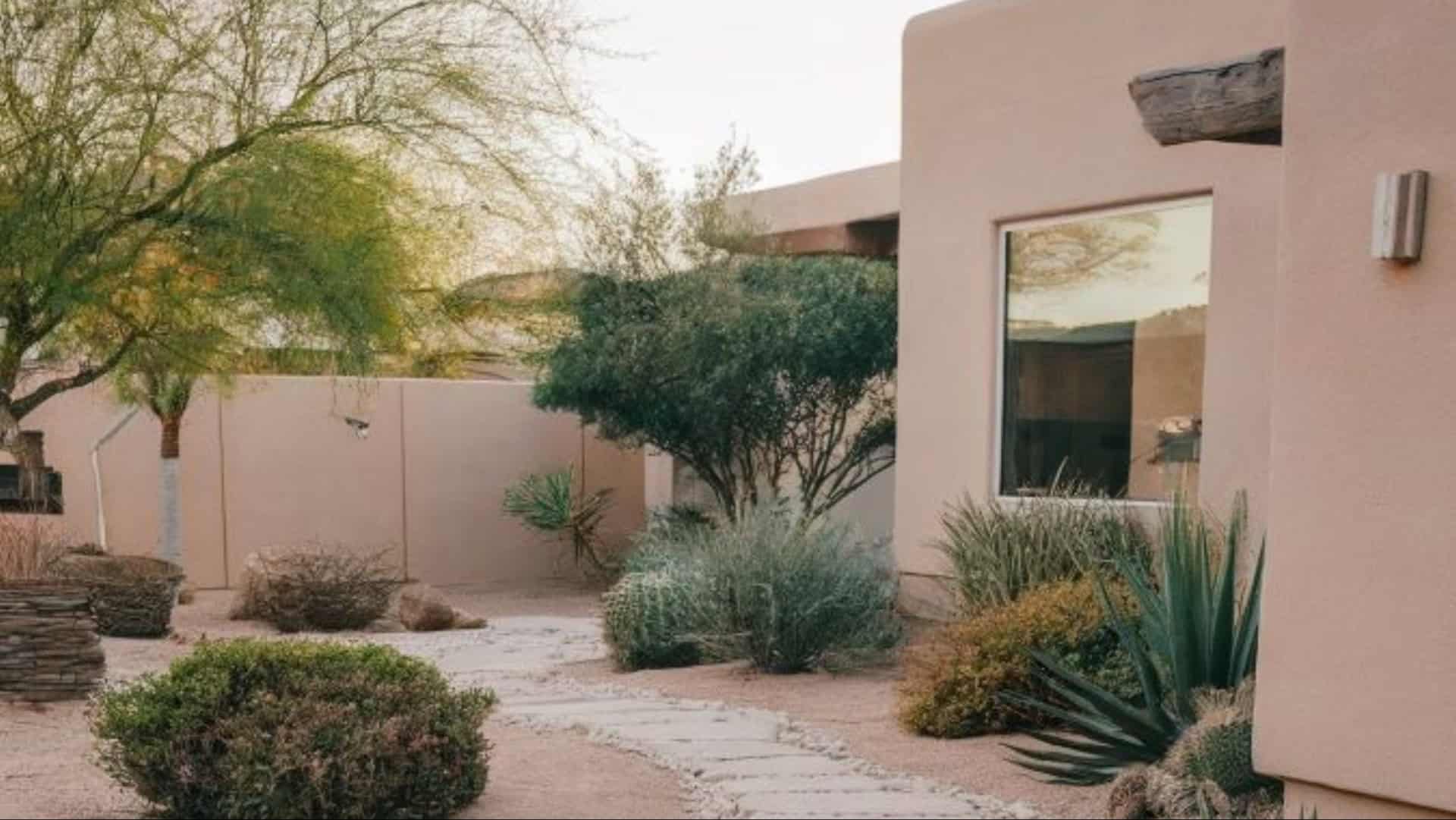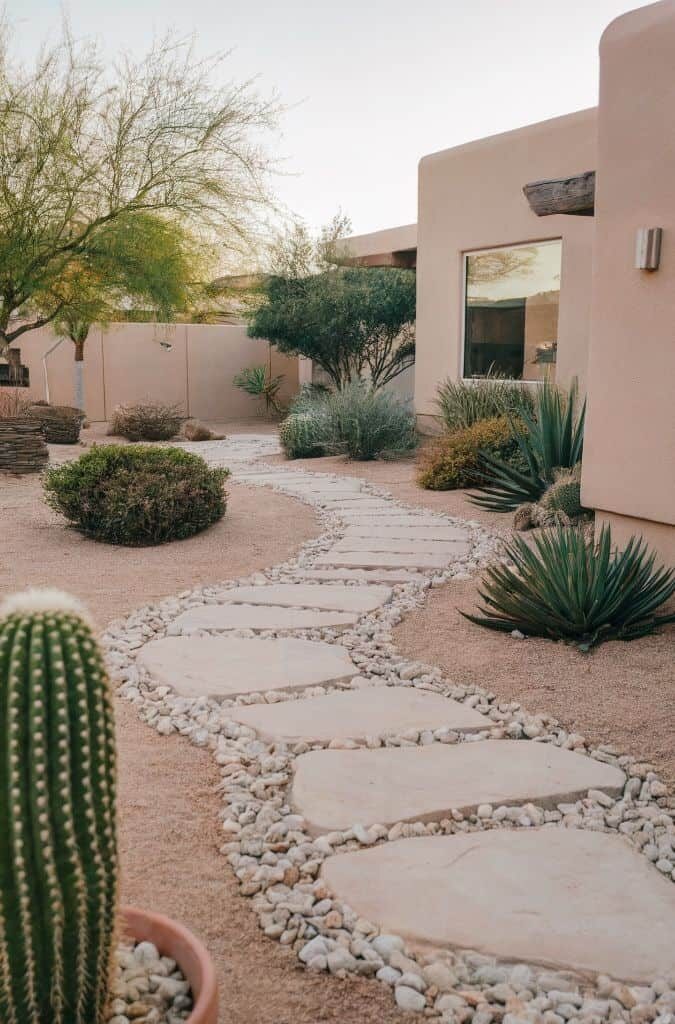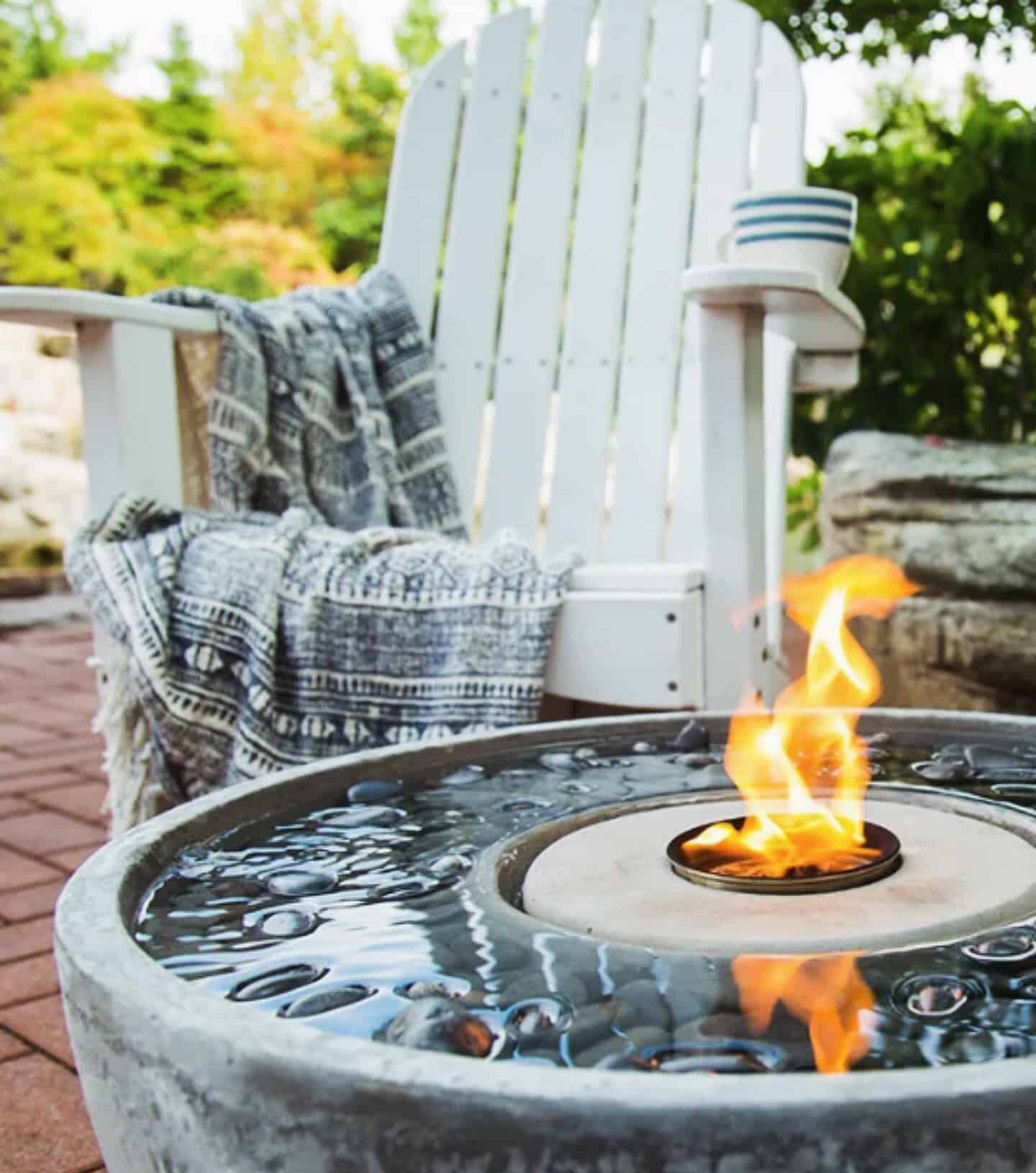As Americans adapt to changing climates and unpredictable rainfall, the concept of the backyard is evolving.
Drought-friendly gardens are gaining popularity as they require less water and maintenance.
This new approach to landscaping focuses on sustainability and resilience, ensuring that your garden remains vibrant and lush without the need for constant watering.
Here are 10 innovative ideas to transform your backyard into a stunning oasis that thrives even in dry conditions.
1. Succulent Symphony
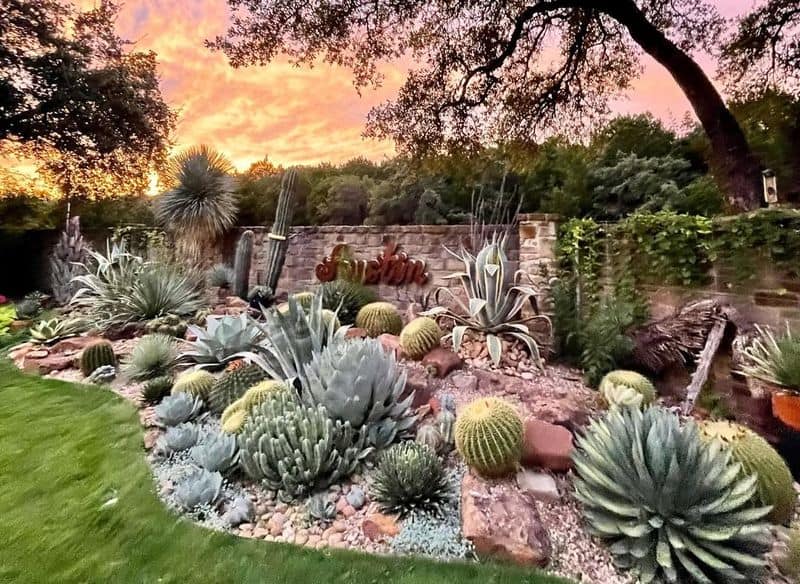
Succulents are the stars of drought-tolerant gardens, offering a splash of color and texture. Their ability to store water in their leaves makes them ideal for areas with limited rainfall.
When planting succulents, consider mixing different shapes and shades for visual interest.
Group them in clusters or pots to create focal points.
These resilient plants thrive in well-drained soil, making them perfect companions for rocks and gravel, adding to their low-maintenance appeal.
2. Native Plant Paradise
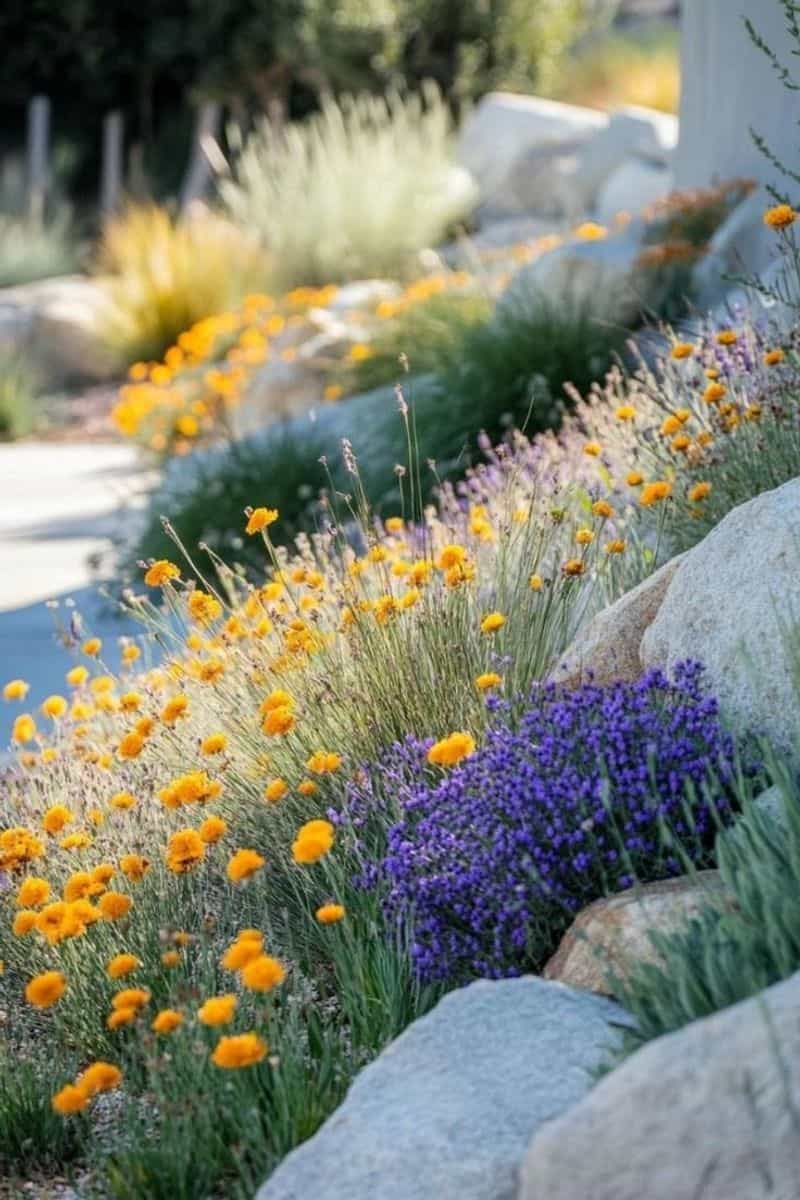
Embrace native plants for a garden that flourishes with minimal water. These plants are accustomed to local climates and soil, needing less intervention to thrive.
Native plants attract local wildlife, supporting biodiversity. Create a layered look by combining shrubs, grasses, and flowering plants.
The result is a naturalistic garden that changes with the seasons, offering year-round interest.
Enjoy a harmonious balance between aesthetics and ecology in your backyard retreat.
3. Gravel Garden Oasis
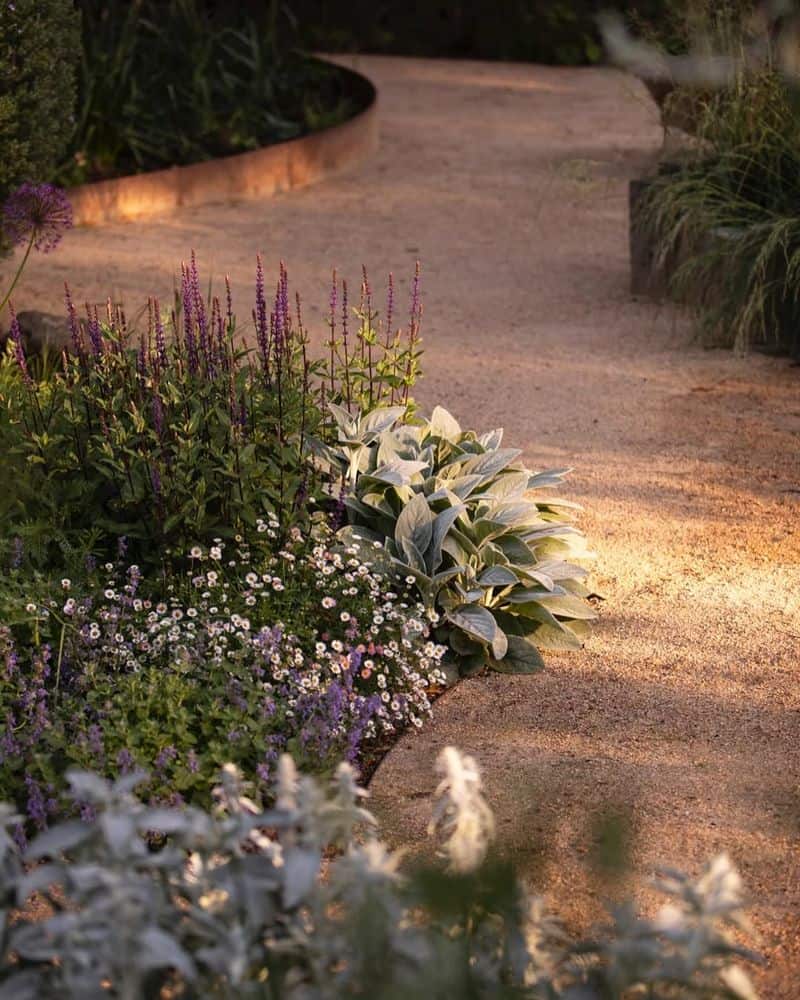
Gravel gardens are a chic and sustainable choice, providing excellent drainage and a clean aesthetic.
Use gravel as a base layer, and intersperse with hardy plants like lavender or yucca. This setup reduces the need for watering and weeding.
Gravel gardens are ideal for minimalists who appreciate a low-maintenance landscape. Add comfortable seating and a fire pit for evening gatherings.
Enjoy a serene garden that requires less effort but offers more relaxation.
4. Vertical Green Wall
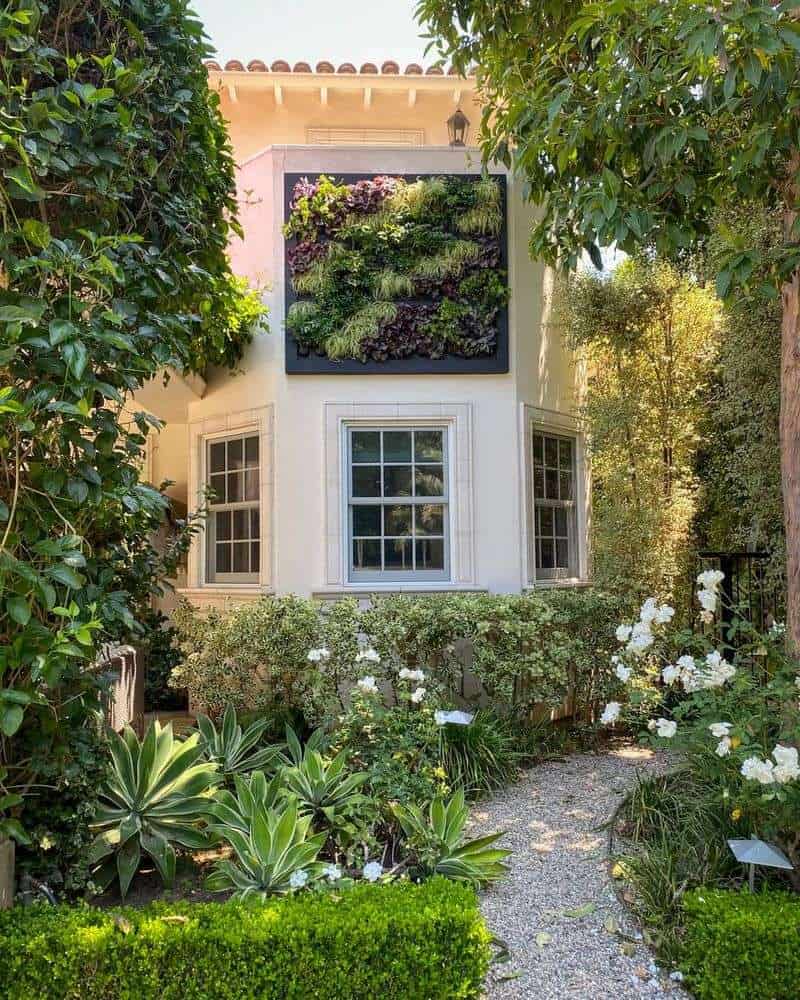
Maximize space with a vertical garden, ideal for small backyards or urban settings. Use a sturdy frame to support pots or pockets of plants.
Focus on species that thrive with little water such as herbs or succulents. Vertical gardens can add greenery to walls and fences, creating a unique visual feature.
They also enhance air quality and cooling in outdoor spaces. This living wall provides privacy and a lush backdrop for outdoor gatherings.
5. Xeriscape Retreat
Xeriscaping designs your garden to use minimal water, focusing on efficient irrigation and drought-resistant plants.
Incorporate stone pathways and mulched beds to reduce evaporation. Use native grasses and perennials to create depth and movement.
This thoughtful approach results in a dynamic yet tranquil garden environment. Incorporate seating areas and shade structures to enjoy the space comfortably.
Experience the beauty of a garden that respects and conserves water resources.
6. Pollinator Haven
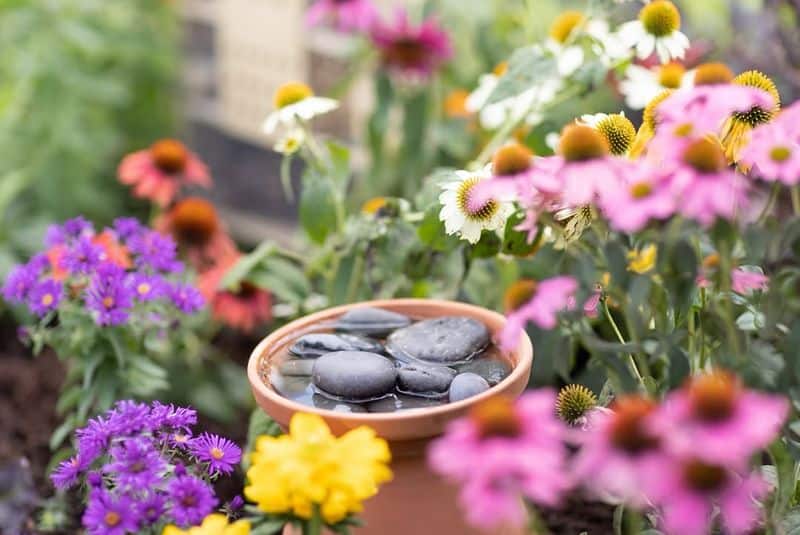
Design your backyard to support pollinators by choosing flowering plants that attract bees, butterflies, and hummingbirds.
Opt for native bloomers that require less water and maintenance. Arrange plants in clusters to make it easy for pollinators to find them.
This garden style not only adds color and life but also contributes to the ecological health of the area.
Create a vibrant ecosystem in your backyard, blending beauty with environmental responsibility.
7. Rainwater Harvesting Hub
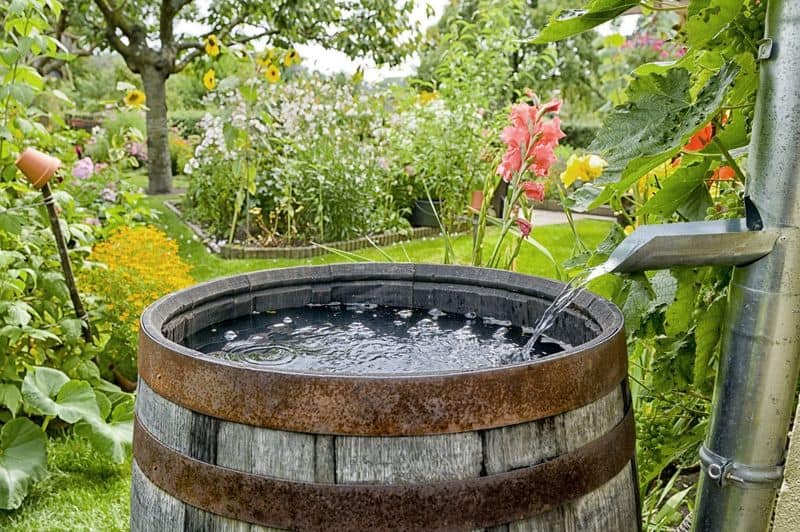
Incorporate rainwater harvesting to make the most of natural resources. Use barrels or tanks to collect rain from roofs and gutters, channeling it into your garden.
This sustainable practice reduces water bills and conserves a vital resource. Irrigate garden beds with stored rainwater, prioritizing plants that thrive with occasional deep watering.
Enhance your garden’s resilience against drought while maintaining a lush, thriving landscape that is both eco-friendly and efficient.
8. Fire and Water Feature Combo
Combine fire and water elements for a stunning focal point. A fire pit next to a small water feature creates a serene yet dynamic atmosphere.
Surround these features with drought-tolerant landscaping to enhance their aesthetic.
This setup encourages outdoor enjoyment at any time. The contrast of elements adds visual interest while promoting relaxation.
Drought-friendly plants like ornamental grasses add texture without high water demands. Transform your backyard into an inviting retreat.
9. Edible Drought Garden
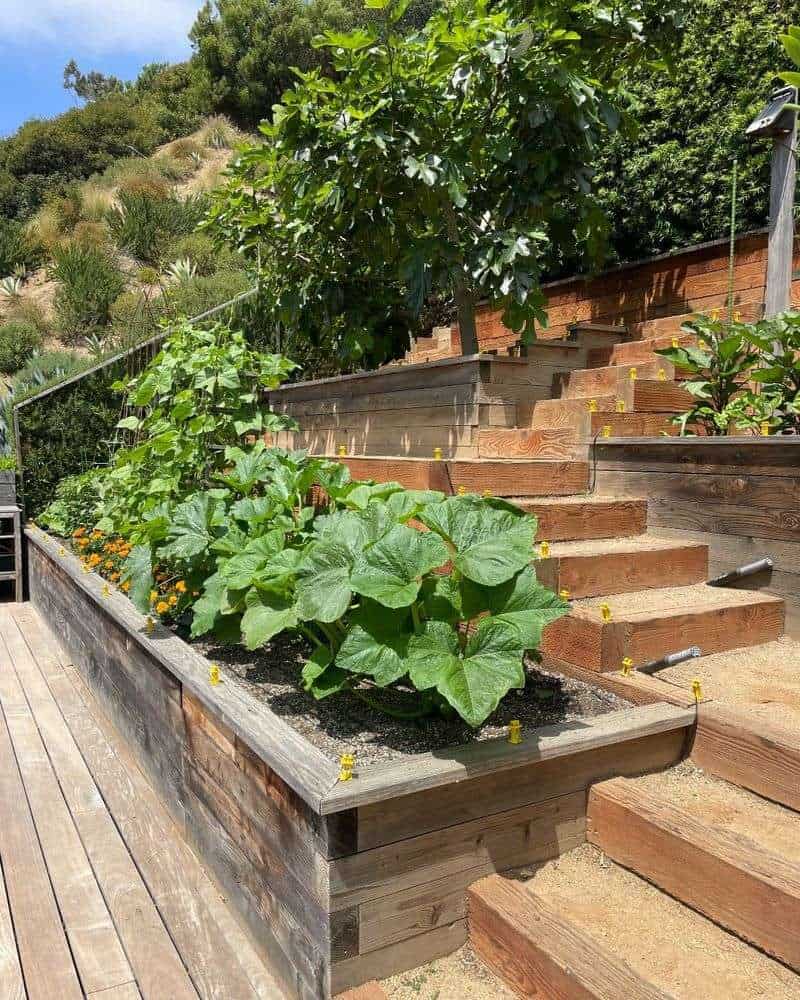
Grow your food with a drought-tolerant twist by selecting herbs and vegetables that need minimal water. Raised beds improve soil drainage and accessibility.
Focus on hardy edibles such as rosemary, thyme, and artichokes. These plants offer culinary delights and resilience against dry conditions.
Organize your garden with pathways to navigate easily between beds.
This setup not only reduces your grocery bill but also provides fresh ingredients for your kitchen while conserving water.
10. Shade and Shelter Design
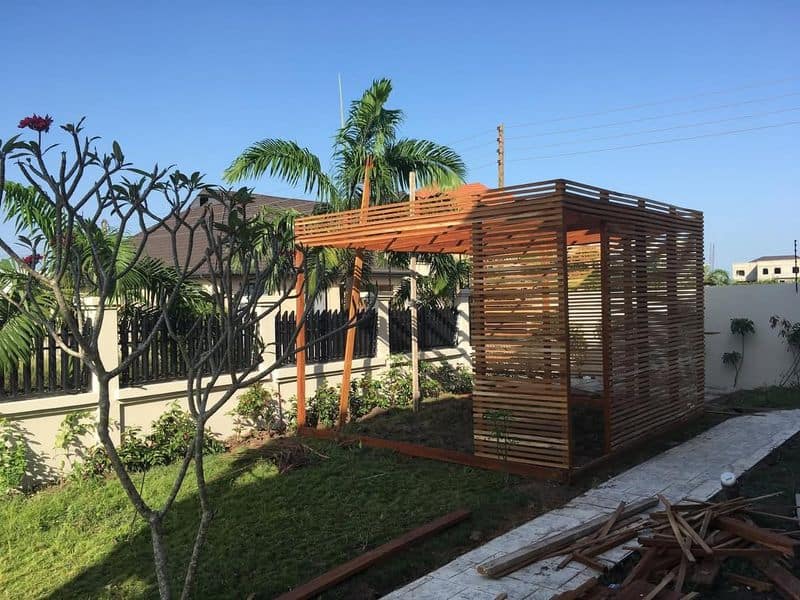
Introduce structures like pergolas or gazebos to create shaded areas, enhancing comfort during hot days. Use climbing plants like wisteria or grapevines for added green cover.
These structures extend living space outdoors, offering a cool retreat.
They integrate with drought-tolerant gardens by providing shade that reduces water evaporation.
Enjoy a comfortable and stylish outdoor area that encourages relaxation and social gatherings, all while supporting a sustainable garden design.

